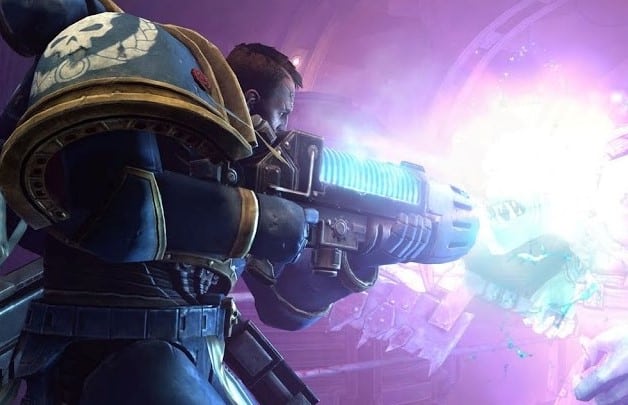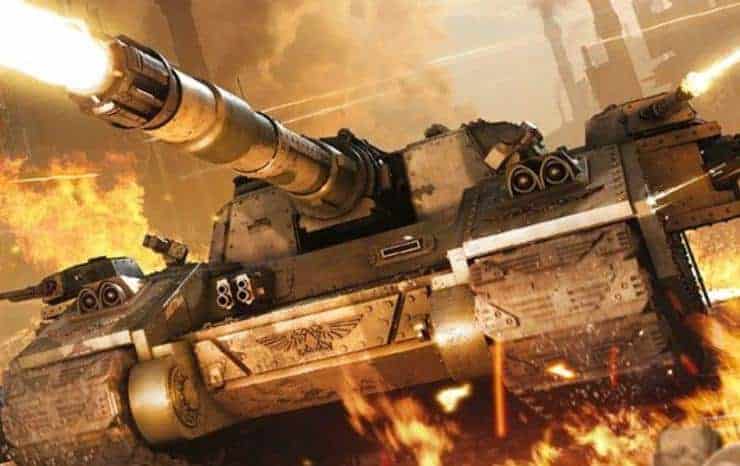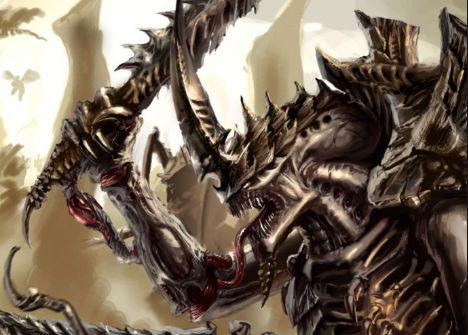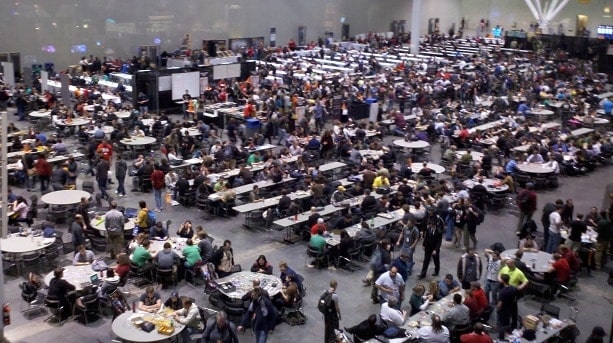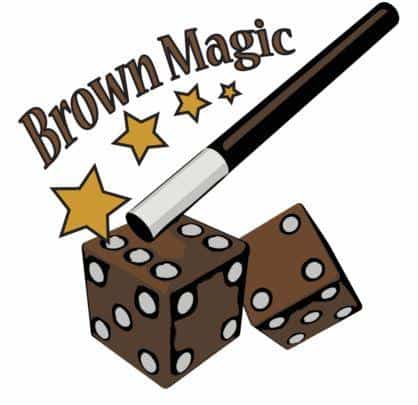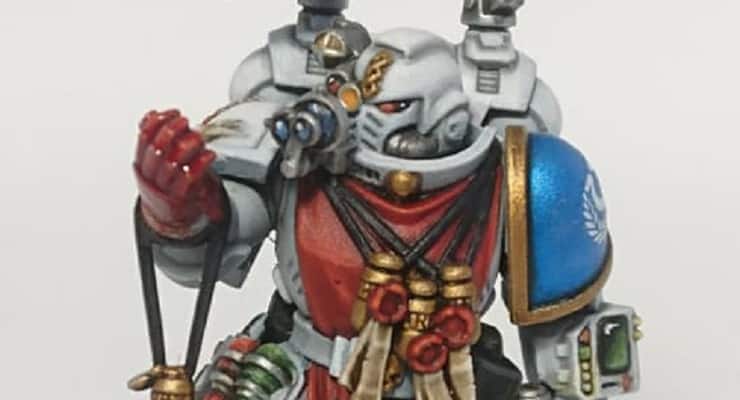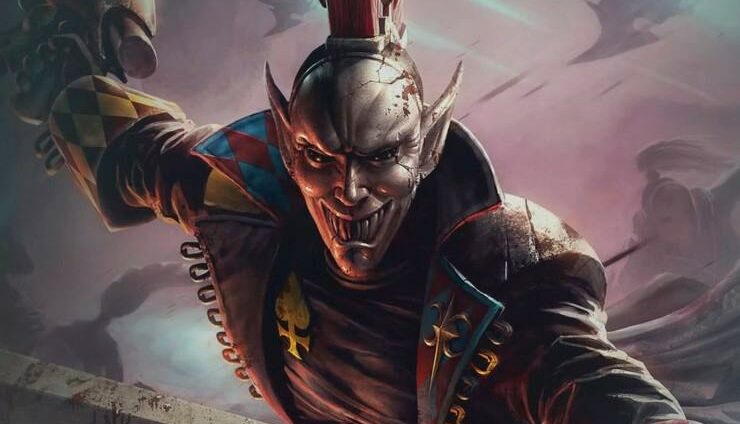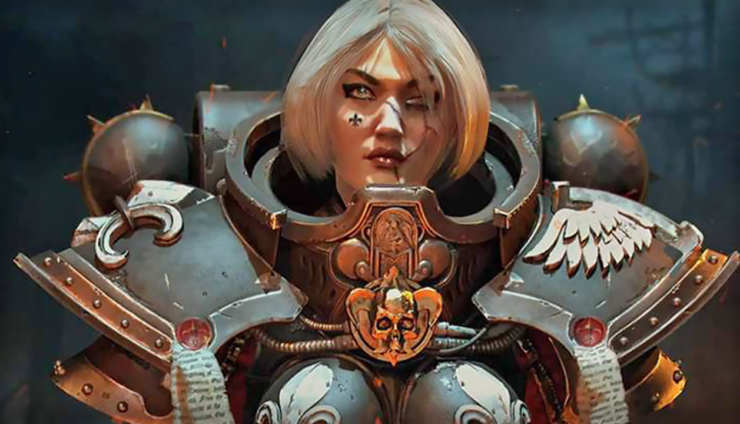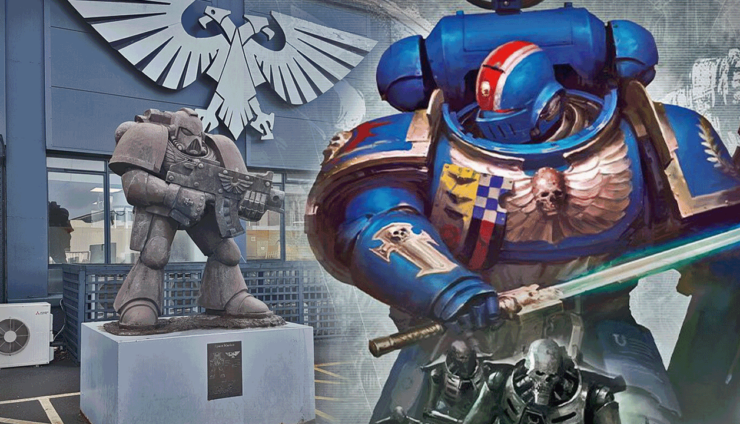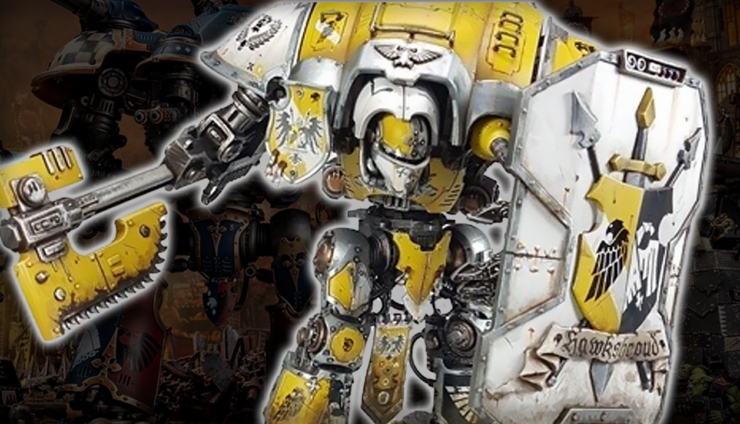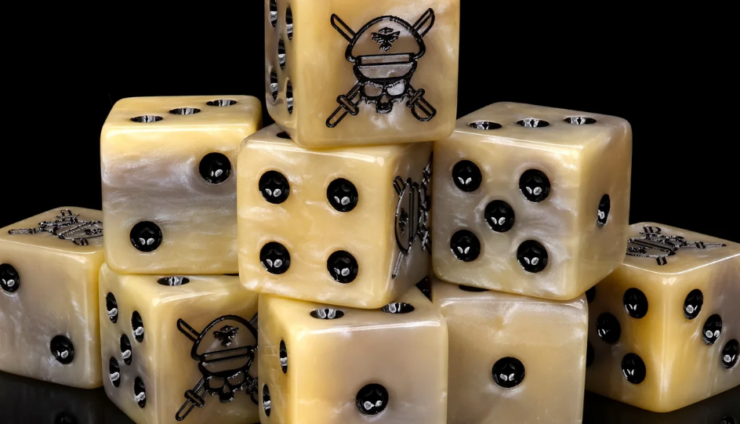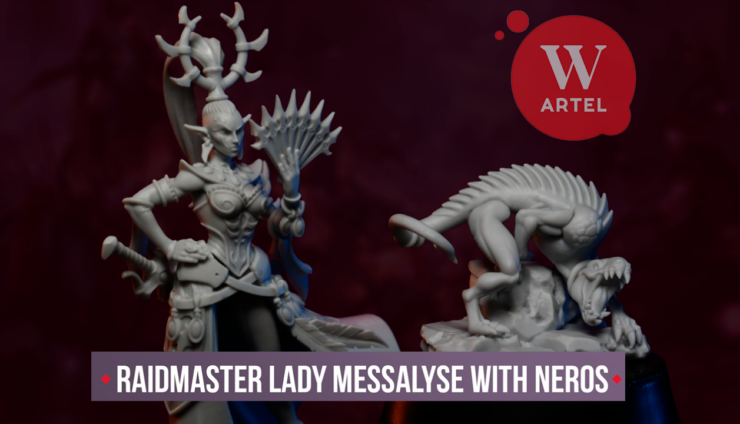Today Nick Nanavati of the Brown Magic takes us on a journey explaining two easy ways to build better tournament armies.
The Thoughts and Thinkings of a Matt Root
You’ve returned? Come now, children. Sit with me by the fire. Let me speak of ancient riddles and terrible challenges, those that await those who venture into the tournament realm. Perhaps you have heard of the tale of the Gatekeepers? No legend are they. Indeed, every tournament has them, even though you may not realize it.
What’s that now, child? You know not of what a gatekeeper is? Come then, enjoy my tale.
#1: Gatekeepers
Gatekeepers are the tried and true armies of Warhammer 40k Tournament Play. They are popular, diverse, and most of all, ubiquitous. Essentially, they are the classic armies you see throughout tournament play that you are almost guaranteed to see across from you on the table. The term of Gatekeeper represents what they are: if you cannot beat these armies, you won’t make it far into the realm of competitive 40k.
Let me give an example. How many times in the last year have you come across Dark Reaper spam, at least prior to the FAQ? No one in the history in 8ed walks up to a table with an Eldar player and is shocked to see they have 10-20 of the stupid emo shooter jerks. How many times did you play against Grey Knights in 5ed when the codex came out? How many times did you play against Daemon summoning spam in 6ed?
How many times did you play against a Barkstar in 7ed? These are all examples of Gatekeepers: Common armies to see across you on the table that you need to be successful at beating if you want to win a tournament. If you can’t beat a Ynnari list in the current meta of 40k, then your list just isn’t going to cut it.
Every list you build should be prepared to face against Gatekeepers. Thus, when you are preparing for a tournament, you need to actively take into account what the current gatekeeper armies are and prepare accordingly.
Let’s talk about the current Gatekeeper Armies:
- Tyranids: When you walk up against a Tyranid player, you should almost always expect to see some variant of the following: 3x Flyrants, some Hive Guard, and likely some genestealers.
- Ynnari: Dark Reapers are still good, even after the nerf – they won’t be going away anytime soon. Beyond that, you will likely see rangers, Wave Serpents to hide the reapers in, and maybe some Dark Eldar allies with a lot of psykers.
- Death Guard and Nurgle: Plagueburst Crawlers are still insanely priced for how obnoxiously hard they are to kill. Throw in some Plague Drones, a nurgle tree or two, and you have an incredibly tough time killing these guys.
- Astra Militarum: Gunline guard. Manticores, Taurox Primes, Heavy Weapon Teams with Mortars, maybe a Shadowsword.
You’ll notice a theme with these armies: you’ve almost certainly played against these lists several times before at a tournament. The chances of you playing in a 6 round GT without running up against a couple of these is slim to none.
As such, if your list can’t cut it against every single one of these lists, then you need to rewrite your list so it can.
It is important to note that Gatekeepers do not represent the only dangerous armies in 40k. Rather, they represent the most common armies you’ll see at a tournament. Dark Eldar are a great example of this – they are an incredibly competitive army, but at the moment, there just aren’t that many Dark Eldar players, so your chances of playing against one aren’t super high. However, the same can’t be said of Gatekeeper armies.
Gatekeeper armies are constantly shifting – it is important to try and keep your finger on the pulse of 40k to know what armies to expect at a local tournament. Moreover, the gatekeeper armies you see at a place like LVO are going to be vastly different from the gatekeeper armies you see at Warzone Atlanta. These are two different parts of the country, so it always helps to do a little bit of homework before heading to a big event so you know what to expect.
This leads me to my second topic….
#2: Building for the Tournament, not for the game
*Note this also falls right in line with Nick’s article 7 Steps to Win a Tournament
This is a heavily undervalued aspect of Warhammer 40k that a lot of players don’t necessarily appreciate. Let’s talk about an example.
Many people can recall the insane cheesiness that was my 7x Flyrant list that I brought to Adepticon. It was something like this:
7 Flyrants, 8 meotic spores, 4 mawlocs, a bunch of rippers.
Even though it’s not legal anymore due to the FAQ, it seems a fairly straightforward list, right? It has just about all elements: movement, shooting, assault, and psychic powers. The list has mobility, board control, and can beta strike.
So let me ask you this: why didn’t it win at LVO 2018, where Ynnari was king? Moreover, why didn’t Ynnari (who ruled over LVO) not crush all contenders at Adepticon?
To put it tersely: because of the tournament.
To understand this, you need to understand the differences between the Adepticon format and the Las Vegas Open format.
| Adepticon Format | Las Vegas Format |
|
|
|
|
|
|
|
|
Let’s talk about these in more detail.
At Adepticon, there isn’t anywhere to hide from Flyrants. With very little in the way of LOS block, infantry suffers heavily because they just can’t get away from the stupid flying monsters. Moreover, because you get a huge amount BONUS points when you table your opponent, you want to play aggressively to wipe your opponent out. The objectives are generic things like “kill something on turn one”, or “Be in your opponent’s deployment zone” – things nearly any army can pull off.
Furthermore, because there is little in the way of terrain, you want an alpha strike army which can blow your opponent away before they have a chance to react since they literally can’t hide from it.
At Adepticon, you want to go first, hit your opponent fast and hard, and rely on shooting to crush your opponent. 7x Flyrants are perfect for this job.
At the Las Vegas Open, the opposite is true. There are lots of areas with LOS block, and moreover, due to the way ruins work there, Flyrants often can’t even charge things inside the terrain which gives infantry a HUGE advantage. The objectives require you to not only kill things every turn but also to hold objectives, so you can’t rely on outliving your opponent: you actively have to outplay them on every turn.
The Tertiary Objectives really play against you and your 7 Flyrants: If your opponent picks Big Game Hunter, HeadHunter, and Kingslayer, all they have to do is kill 4 Flyrants (including your warlord) to max out for a total of 12 freakin’ points.
At the Las Vegas Open, you often want to go second, retain control over the whole board while whittling away at your opponent, and infantry reign supreme due to terrain rules. 7 Flyrants aren’t gonna cut it.
This is what I mean by Building for the Tournament: you need to be aware of the tournament format and how your list can be designed to be stronger or weaker for it. Prior to Adepticon, I NEVER took 7 flyrants because I knew it was a garbage list in other formats. Instead, I played a lot of ITC games where I took things like Genestealers and Hive Guard (which can hide behind ruins) and Carnifexes (which give up precisely zero points in ITC format).
If you want to be successful at tournament play in Warhammer 40k, you need to read the tournament format and adjust your list accordingly. Does every mission rely on end of game objectives? Build a resilient army of Death Guard. Does every mission require killpoints? Take 1x Squad of ten reapers instead of 2x squads of five. These are examples of adjustments you need to make to adapt for a format.
Let’s use the following example: I want you to look at the following list and tell me how you should adjust it for ITC format. Don’t worry about points or how to make the list more killy, just think of adjustments you could make to the list which would make it better for that particular format, paying careful attention to ITC’s Tertiary Objectives.
Astra Milatarum Brigade |
| Company Commander |
| Company Commander |
| Company Commander |
| Pask- Battle Cannon (Warlord) |
| 10 Infantry- melta gun |
| 10 Infantry- melta gun |
| 10 Infantry- melta gun |
| 10 Infantry- melta gun |
| 10 Infantry- melta gun |
| 10 Infantry- melta gun |
| Platoon Commander |
| Platoon Commander |
| Platoon Commander |
| 10 Rough Riders |
| Sentinel |
| Sentinel |
| Basilisk |
| Basilisk |
| Basilisk |
| Manticore |
| Manticore |
| Manticore |
| Shadowsword |
What’s wrong with this list? How can we make it better?
To understand this, we have to look at the ITC Tertiary Mission Objectives. If you need a refresher, look here at this link. Don’t worry, I’ll wait.
ITC Mission Format: https://docs.google.com/document/d/1ltQMdeDqYRXOhvdYT3dtUSji3AISvZRM8gDlhOXDaF8/edit#
Let’s go through this bit by bit, and look at each Tertiary:
Headhunter: This list is begging to give this to your opponent. You have 7 (SEVEN!) characters – 3x Company Commanders, 3x Platoon Commanders, and Pask. 6x of these characters are ridiculously easy to kill. If we drop the 3x Platoon Commanders (who aren’t really doing anything besides filling a slot), then we are now down to 4x characters total, making this tertiary much harder to achieve for your opponent.
Kingslayer: This list is begging to give this to your opponent. Pask being your warlord is a HUGE mistake. Because he’s the warlord AND a character, if your opponent kills him (and only him!) that’s automatically 4 points. Boom. Instead, give the warlord trait to one of the random company commanders – now Pask is worth only a max of 3 points (you could also just drop him from the list entirely!) For this same reason, I NEVER make my Flyrant a Warlord in ITC format and give it to a Neurothrope instead.
The Reaper: This list is begging to give this to your opponent. You have 6x guardsmen squads begging to die. If your opponent kills four of them, he’s just maxed out on this Tertiary. Instead, let’s give a mortar team to each of the infantry squads, making them nine models each. That means your opponent won’t be getting ANY reaper points from your infantry squads now.
Big Game Hunter: This list is begging to give this to your opponent. You have 7 freakin’ tanks with 10+ wounds on the board. If your opponent kills four, he’s just maxed out on this tertiary. Instead of having vehicles, why not add mortar teams or quad launchers? If you can decrease the number of 10+ wound models without losing effectiveness, you will make this tertiary harder for your opponent.
So now, after making the adjustments to the list, you just saved yourself from giving up potentially 16 free points to your opponent by making small tweaks. This is what I mean when I say it is important to build for the tournament, not for the game. The list above is fine – competitive, even – but it will suffer without the changes we discussed because the tournament format wasn’t taken into account. Never build your list without reading over the missions and recognizing how you can adjust for them – it will often make the difference between victory and defeat.
Next Up In this Article Series: Part III: Bravery in Combat and Winning with Pessimism
Check out more great new resources to help you play 40k better over at Brown Magic:
